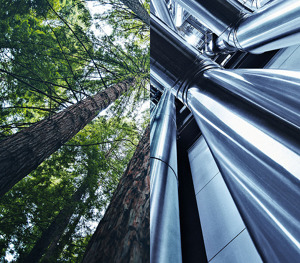Topsoe supports SGP BioEnergy in renewable fuels production in Panama
Topsoe, a global leader in carbon emission reduction technologies, has been appointed by SGP BioEnergy to support the production of renewable fuels in South America’s largest upcoming renewable fuels plant, located in Panama.
Topsoe will provide its innovative HydroFlex technology to produce SAF and RD, while also deploying its H2bridge technology to ensure the plant has a net-zero greenhouse gas footprint, recycling green hydrogen generated by waste carbon and production by-product back into the plant’s operations.
Henrik Rasmussen, Managing Director, The Americas, Topsoe, said: “This is truly an amazing project, and we are proud to work with SGP BioEnergy to bring it to life. We are excited to support the production of low-carbon fuels with our proven technologies for what will be the largest renewable fuels plant in South America, while also facilitating the net-zero operations of the biorefinery. It is a true model for a low-carbon energy future.”
Construction is on schedule for first production by 2025. The biorefinery will have a producing capacity of 180,000 barrels per day (2.6 B gallons per year) of biofuel and 405,000 metric tons of green hydrogen annually once fully operational. Panama offers great potential as a platform to transport the sustainable fuels globally.
Randy Delbert Letang, CEO of SGP BioEnergy, said: “This facility is truly a model of the future of the energy transition. We will not only produce the fuel that will decarbonize transportation but do so in a way that is also decarbonizing the manufacturing process itself. It is the first time both advanced biofuels and green hydrogen will be produced together at this scale, and we are excited to be bringing this innovation to Panama.”
What is renewable diesel
Renewable diesel is a low-carbon fuel made from renewable sources and is chemically identical to regular petroleum diesel. This means, it produces less greenhouse gas emissions, while performing the same as regular petroleum diesel and can be used without modification to engines or infrastructure. Renewable diesel is made sustainably from waste or recycled animal fats, e.g. from restaurants, as well as inedible corn and soybean oil. These materials, that would otherwise be thrown away, are converted into diesel, producing a much cleaner alternative to regular diesel.
What is HydroFlex and H2bridge
With HydroFlex, customers can convert low value feedstocks into drop-in renewable jet and diesel that meets all of the globally accepted specifications for these fuels. The innovative HydroFlex process layout offers lower capital expenditure (CAPEX), but also a lower energy consumption during operation, resulting in a lower Carbon Index (CI).
Topsoe’s HydroFlex can be deployed in both grassroots units and revamps for co-processing or stand-alone applications. HydroFlex is by far the most successful renewable fuels technology globally. The H2bridge technology captures waste propane and carbon off gas from the refining process, converts it into green hydrogen to be included in powering facility operations.







Comments